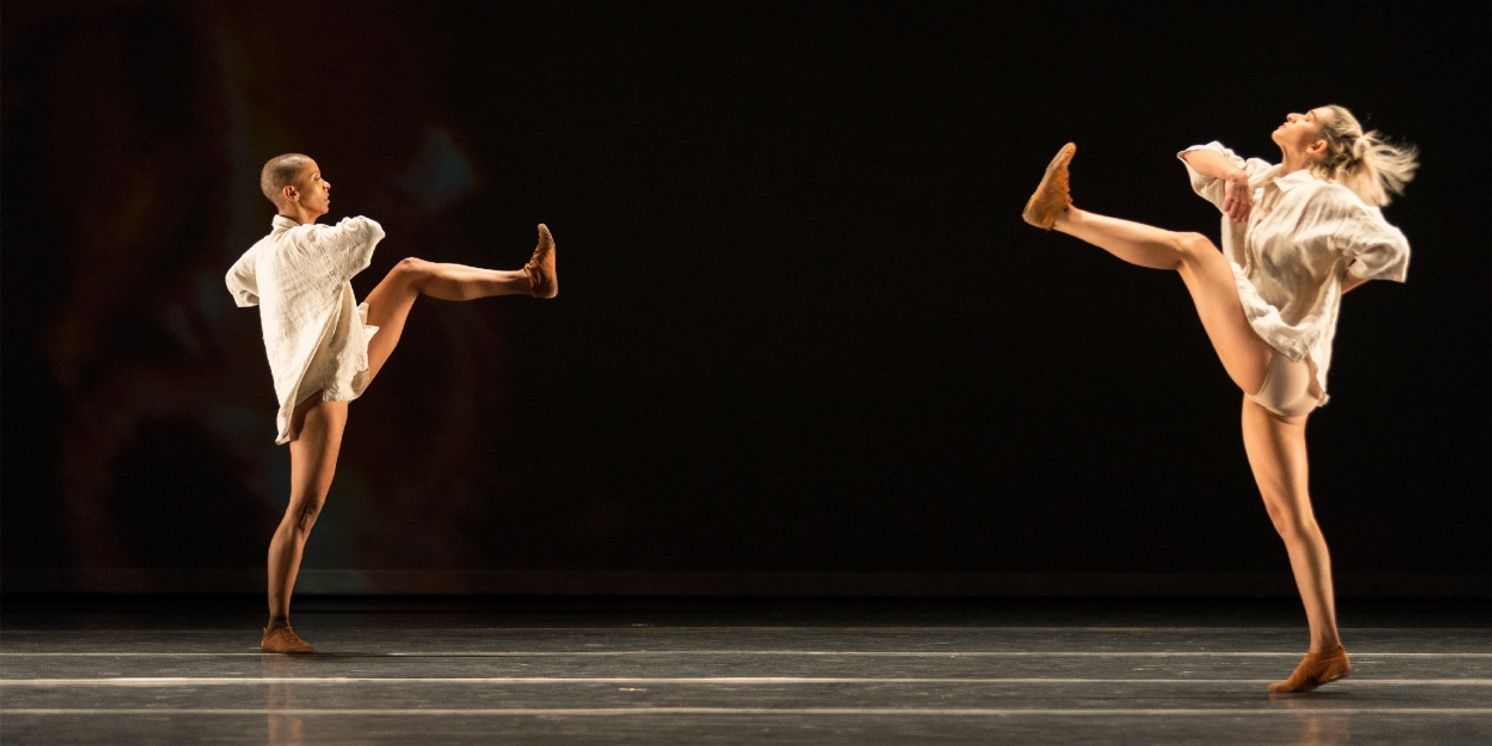Review: GRUPO CORPO at Kennedy Center
This production runs from March 1st-2nd.

Grupo Corpo’s “Gil Refazendo” and “Gira” is a study in modern technique, rebounding energy, and polyrhythmic drive.
To watch the dancers of this company move is to see energy tossed, thrown, and flung outward from the center of the body. Though the moments of extreme spinal extension were many, seeing the dancers’ heads and arms slung back with such force over and over never got old.
In the first act, the beat-forward percussive music by Gilberto Gil electrifies the space and sets an energetic tone. The dancers, dressed in loose white fabric, spring around the stage with determination. This company’s iconic high kick with a flexed foot is featured often and has a sort of punchy, defiant quality. Combined with bent elbows moving in opposition with the legs, the force of the lower body choreography made it clear that these dancers were going somewhere, and quickly.
In the second act, the music by Metá Metá is set with dim lights and chairs lining the stage to create a spookier look. The movement is more grounded, and the black metal-esque music and downward pull of the dancers’ focus invoked a heavy, dreadful mood.
When not moving in the center, the dancers sat at the sides and covered themselves with black veils that split down the middle. Bodies disappearing into and re-emerging from the darkness read as spirits moving in and out of a sacred ritual.
The most remarkable talent of the performers in this company is the fluid strength and flexibility of their spines. As their pelvises initiated powerful lateral and frontal waves through the torso, their hips hit side to side for emphasis and the arms wiggled about, loosely hanging from the shoulder girdle. The chin, tops of shoulders, and elbows were clear points of initiation of many shimmying movements which followed each other with distinction and momentum.
A distinguishing choreographic choice of this company is the complete limpness of the hands and wrists. In contradiction to balletic and modern styles which show clear energy and purpose in the shape of the fingers, the hands of the Grupo Corpo dancers acted as dangling ornaments to emphasize the directional force of the tossed arm. The choice of choreographer Rodrigo Pederneiras to use a flexed foot as standard and a pointed foot as emphasis gave the dance a clear modern tinge.
The biggest disappointment in this performance was the gendered nature of the costuming and choreography. In the first act, I would have loved to see all the dancers in shorts, instead of just the female-bodied dancers, so the strength of the legs of all could be viewed.
The uniformity of the costumes in the second act was appealing, especially during sections when many dancers were moving at once, but the nakedness of the top half of the female bodies still felt unmatched by the expected concealment of normally-covered bodies of the male dancers.
The most discomforting part of this performance were the traditional partnering duets, both in the first and second act. To critically borrow classical ballet elements like the pas de deux is respectable, but I wish that the sexist choreographic language was something reformed instead of reproduced.
It is visually remarkable to see a large body literally throw a small body about, but instead of marveling at the strength and grace of the partnership, I found myself overwhelmed with kinesthetic worry for the smaller dancer.
I could not imagine the holds that the choreographer chose, often at the wrists or upper arms, could have been comfortable for the person being lifted and tossed around. There were even moments where the larger male dancers would use their knees and shins at the spine of the kneeling female dancers, while lifting them by their arms above their head, to move their bodies multiple feet across the stage. Frankly, it looked like a kick to propel the partner, and though the force looked mindfully placed, it read as a kick nonetheless.
Though I realize my perception of this choreography is highly personal, as anyone’s perception of movement is, these sections were something I wish the choreographer had done without.
Grupo Corpo has a run time of one hour and thirty-eight minutes with one intermission.
Photo by Luiz Pederneiras.
Reader Reviews
Videos

